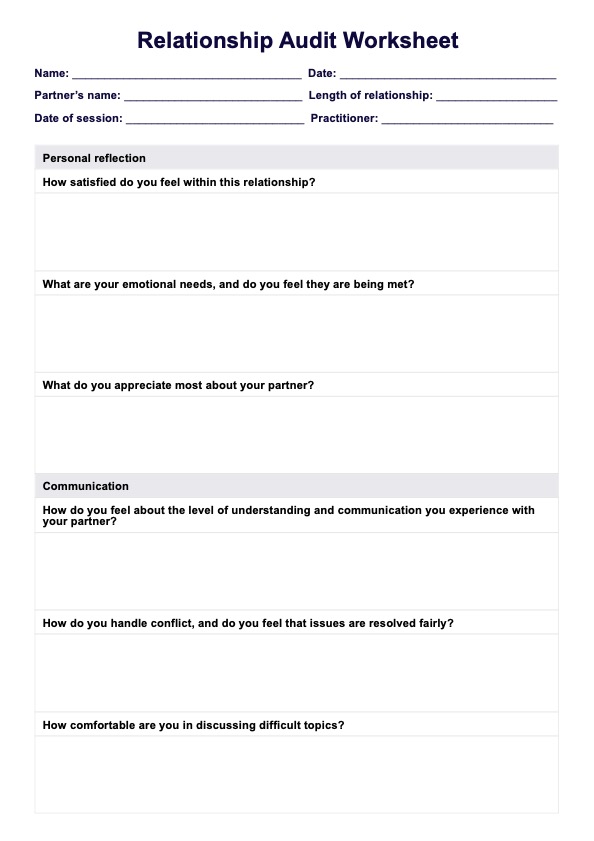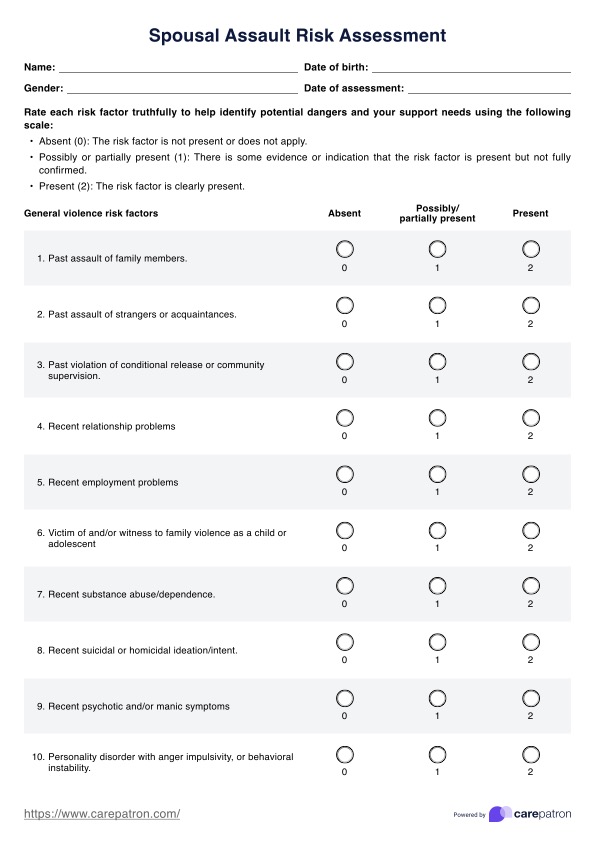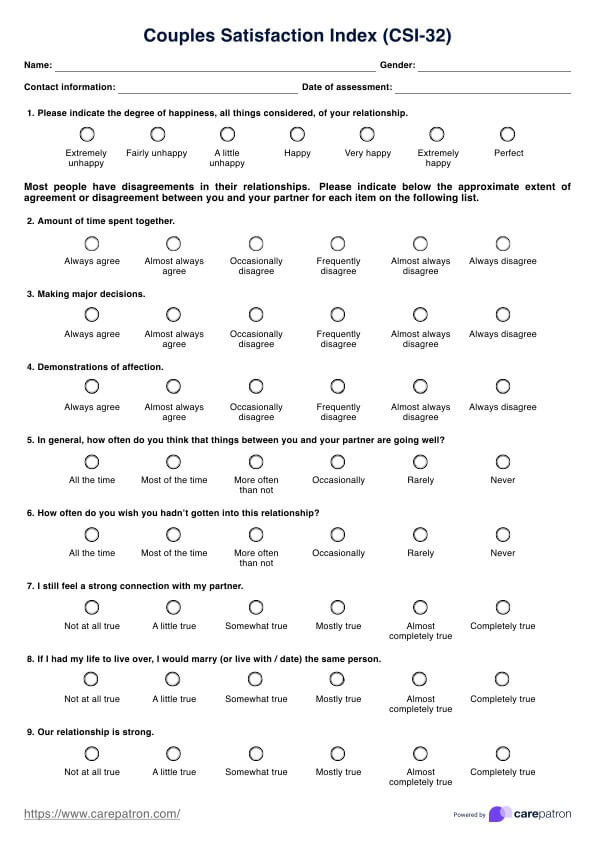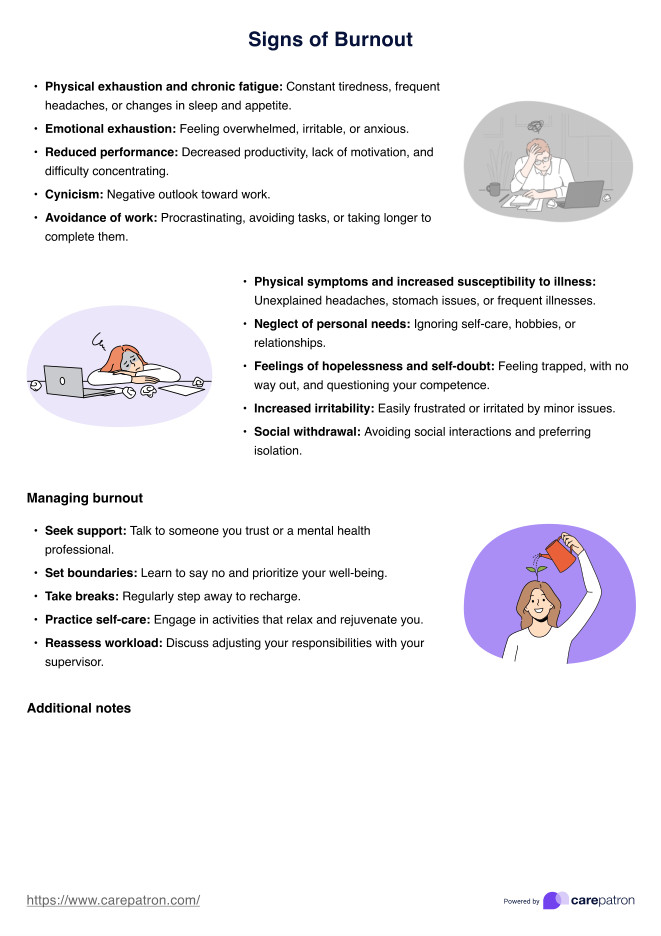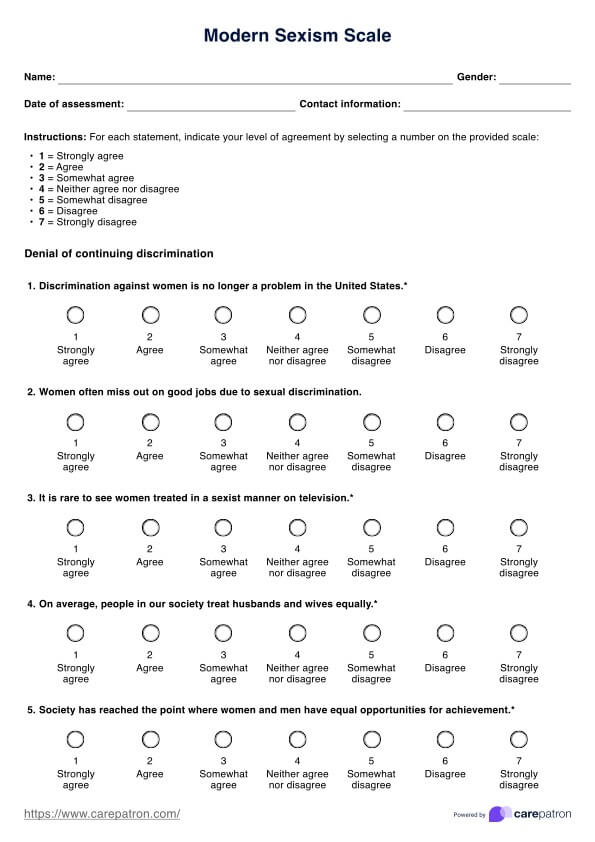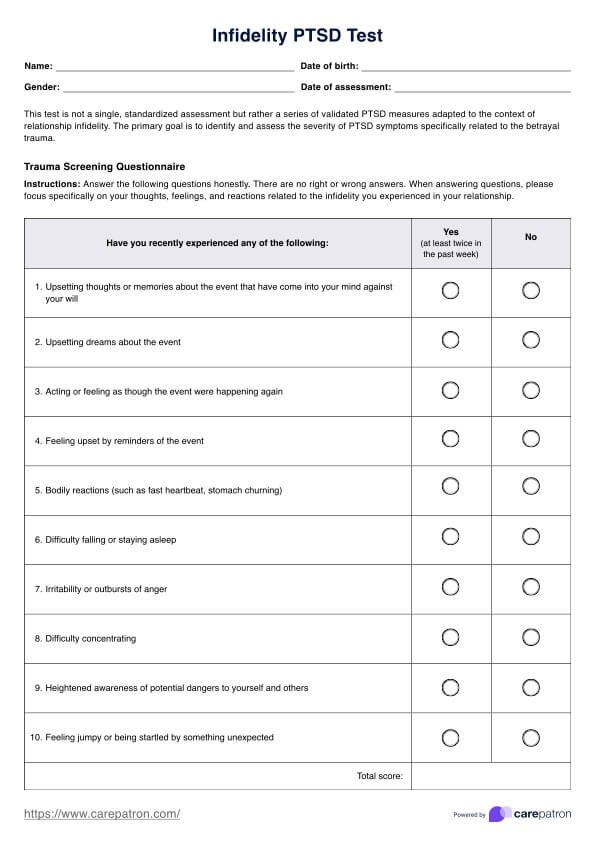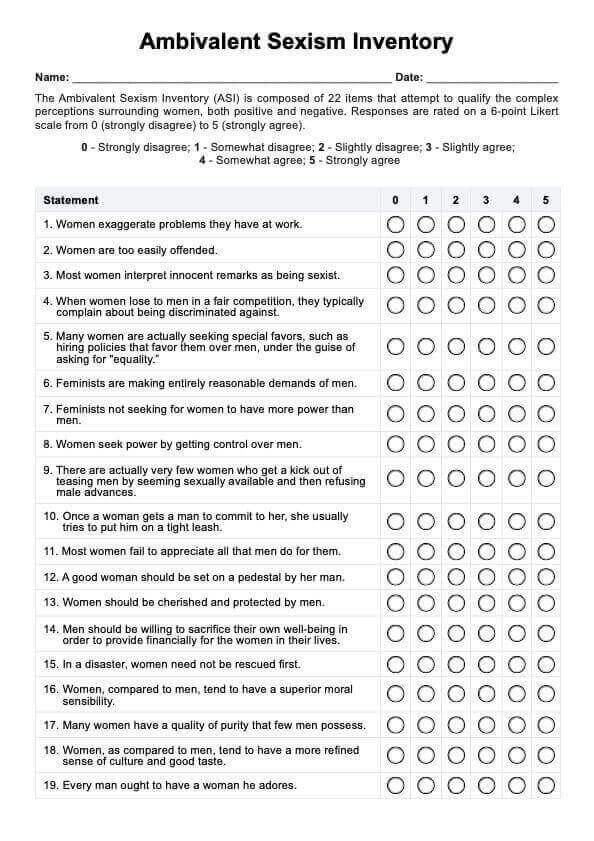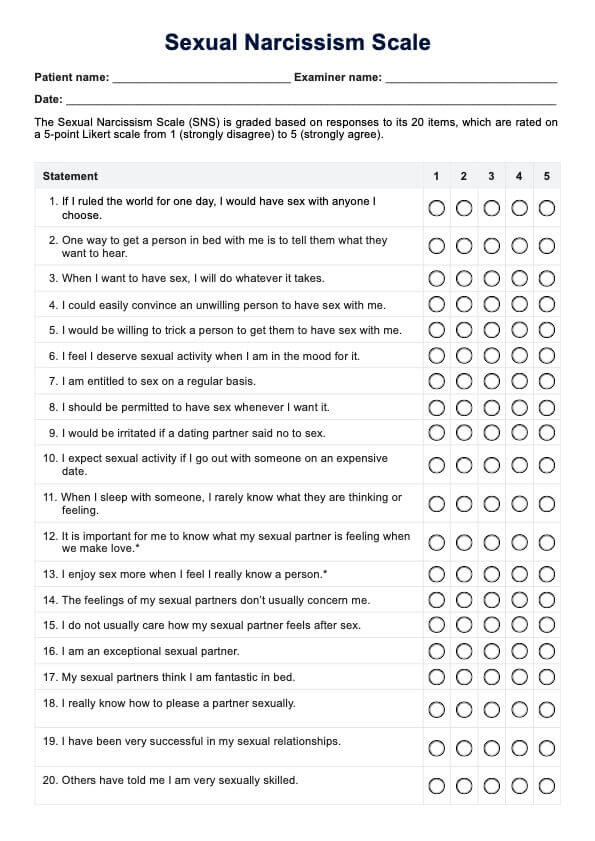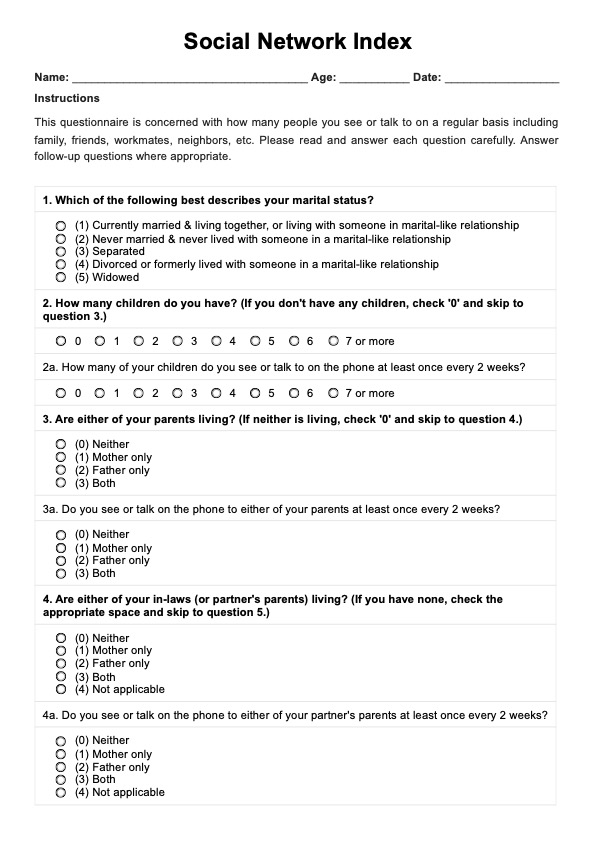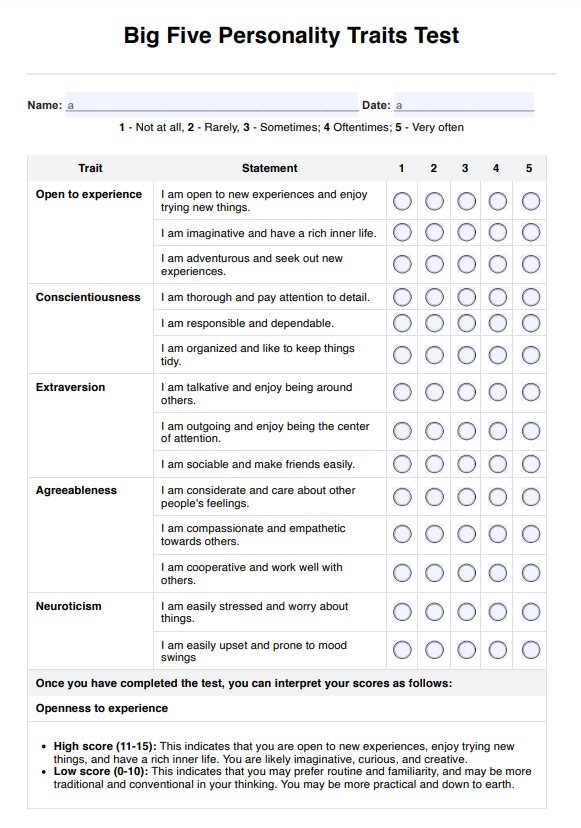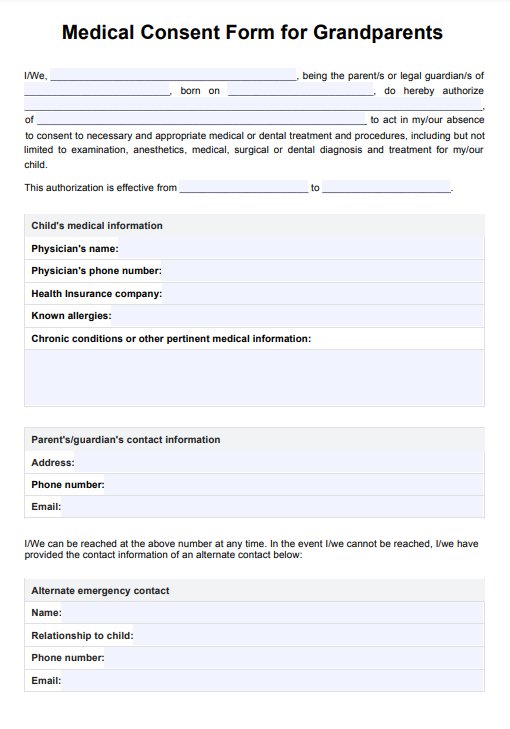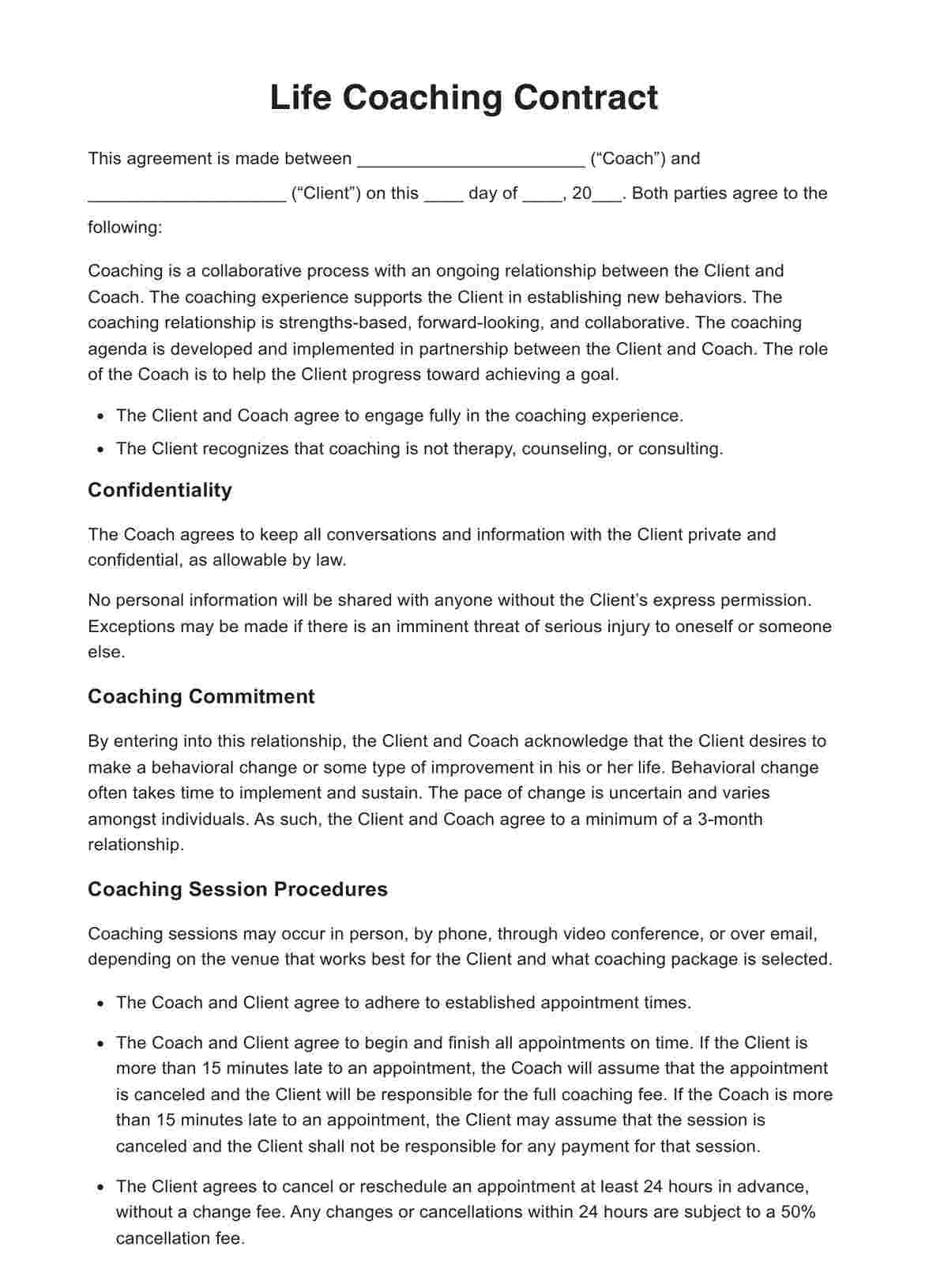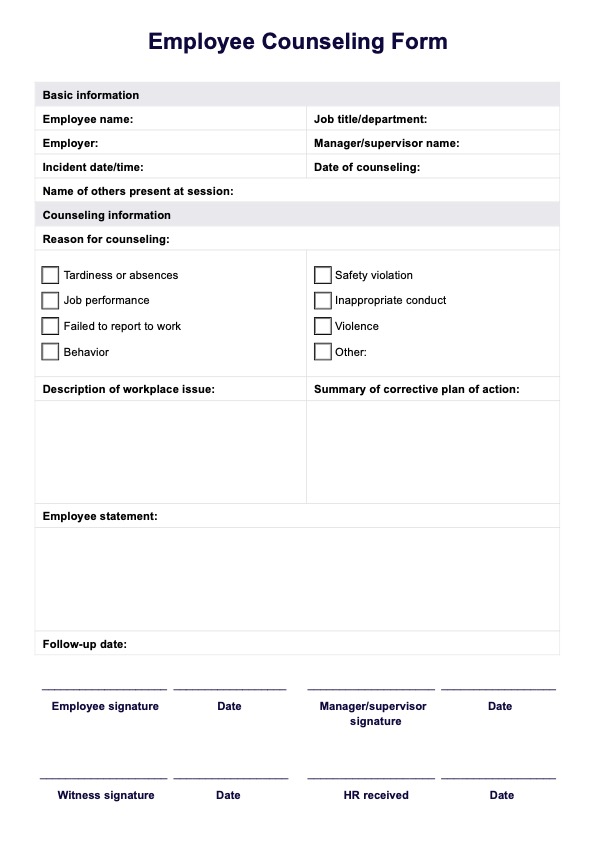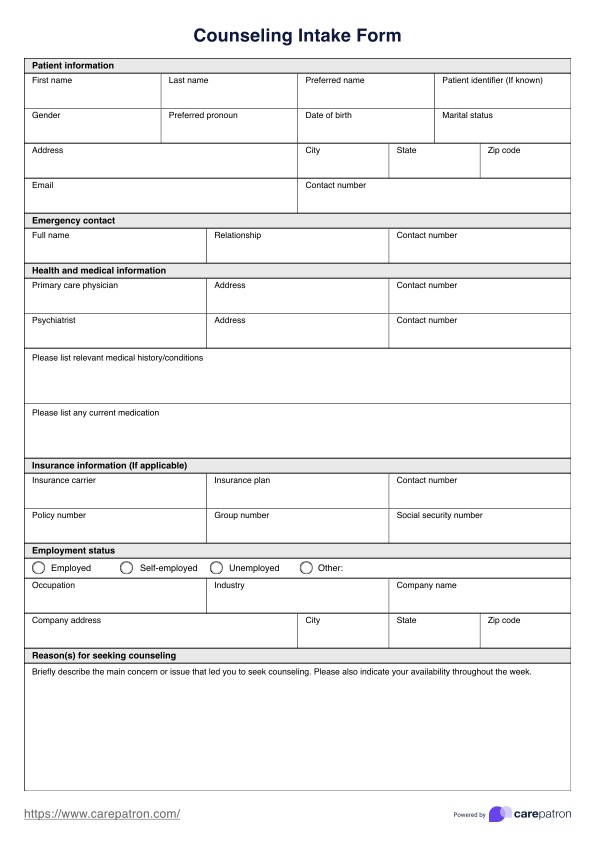Relationship Boundaries Lists
Create healthy boundaries with our Relationship Boundaries List. Easily create, manage, and share boundaries for healthier relationships and well-being.


What is a Relationship Boundaries List?
A Relationship Boundaries List is essential for personal growth and relationship preservation. It enables individuals to distinctly define their comfort levels and what they deem unacceptable within their relationships. This creates healthy boundaries. This concept transcends the confines of a single type of relationship. Indeed, it applies universally to all relationships, including romantic partnerships, friendships, family ties, and even professional connections.
This list's primary role is to foster respect, mutual understanding of healthy and unhealthy boundaries, and healthy communication between all parties involved. It sets the path toward respect, personal space, and self-identity preservation within any relationship.
The real power of a relationship and emotional boundaries list lies in its ability to nurture personal growth while safeguarding the relationship's integrity. It acts as a protective shield that helps prevent feelings of resentment, violation, or exploitation. These negative emotions often surface when boundaries are unclear, disrespected, or blatantly violated. This can support individuals who feel uncomfortable with their current relationship boundaries. Facilitating the ability to have one's own feelings, thoughts, and personal beliefs and setting healthy boundaries can support this.
Relationship Boundaries Lists Template
Relationship Boundaries Lists Example
Which aspects require boundary setting?
Healthy boundaries and boundary setting in romantic relationships do more than protect. They cultivate mutual respect among individuals. Setting these boundaries clarifies what's expected within the relationship, creating an environment of understanding and respect. These can be:
- Sexual boundaries: These involve respecting personal limits regarding sexual activity and ensuring mutual consent and comfort in intimate situations.
- Financial boundaries: These pertain to managing money and financial responsibilities, setting clear expectations about spending, saving, and sharing resources.
- Physical boundaries: These relate to personal space and physical touch, ensuring comfort and consent with physical interactions and proximity.
- Spiritual boundaries involve respecting personal beliefs and practices. They allow individuals to follow their spiritual or religious paths without pressure or interference.
These are some examples of healthy boundaries in relationships that may be discussed. They can facilitate financial independence, determining personal belongings, mutual support, alone time, physical space, and maintaining boundaries. It's also essential to share past relationships and how they have or have not supported emotional well-being and how being able to set healthy boundaries will contribute to a fulfilling relationship.
How to use the Relationship Boundaries List
A Relationship Boundaries List is an essential tool that can help ensure harmony, respect, and personal space in any relationship. Here's how to effectively utilize one:
Step 1: Identify boundaries
Encourage your clients to start by identifying the areas where they feel healthy relationship boundaries are necessary. These boundaries could span various aspects of their lives, including emotional, physical, mental, or digital parameters. Help them understand what makes them feel comfortable and respected and what doesn't. Suggest they reflect on past experiences, consider their values, and think about times when they felt uncomfortable or disrespected in previous relationships.
Step 2: Communicate boundaries
Once your clients have identified their boundaries, guide them in clearly articulating them to the other parties involved. Emphasize the importance of effective communication in ensuring boundaries are understood and respected. Encourage them to be open, honest, and assertive when discussing their boundaries, using clear and straightforward language to avoid misunderstandings that could lead to unhealthy relationship boundaries.
Step 3: Maintain boundaries
After establishing their boundaries, your clients must stand firm and maintain them. Discuss the importance of consistency in upholding boundaries, as others may only take these boundaries seriously if they are consistently enforced. Encourage them to be assertive, follow through with consequences if their boundaries are violated, and continually reiterate their boundaries as necessary.
Step 4: Review boundaries
Explain to your clients that boundaries are not set in stone and can evolve. Prompt them to review their boundaries regularly to ensure they are still relevant and serving their intended purpose. Help them reflect on whether their boundaries are being respected and whether they continue to align with their comfort levels and personal values.
When would you use this form?
The Relationship Boundaries List is for anyone who values personal space, integrity, and mental health. It's not limited to a specific type of relationship or scenario. Here are some instances when this form could prove particularly useful:
New relationships
When your clients embark on new romantic, familial, or professional relationships, it is crucial to establish boundaries from the outset. A Relationship Boundaries List can help them communicate their expectations clearly, preventing misunderstandings and fostering a healthy and respectful relationship.
Existing relationships
Even long-standing relationships can benefit from a Relationship Boundaries List. Over time, boundaries may become blurred, overlooked, or violated. Re-establishing these boundaries can help realign the relationship dynamics, ensuring mutual respect and understanding. Encourage your clients to revisit and redefine their boundaries to strengthen their relationships.
Personal development
This form can assist individuals seeking personal growth or working on their self-esteem. It allows them to assert their needs and wants, facilitating self-reflection to identify what makes them comfortable and what doesn't. This practice can empower your clients to take control of their interactions and foster healthier relationships.
Therapy and counseling
As a healthcare provider, you can use this form during therapy sessions to assist individuals or couples in understanding their boundaries, communicating them effectively, and maintaining them consistently. It can be a resource to guide discussions and interventions, helping clients navigate relationship challenges and develop better communication skills.
Conflict resolution
By explicitly stating each party's boundaries, it can help identify the root cause of the conflict and guide the way toward a respectful compromise. This approach can facilitate understanding and cooperation, promoting healthier interactions.
Benefits
Utilizing a list can be a transformative experience, with numerous benefits contributing to healthier, more fulfilling relationships. Here are some key advantages:
- Fosters mutual respect and understanding: A Relationship Boundaries List helps communicate your needs and expectations, fostering mutual respect and understanding between all parties involved. Defining acceptable behavior and what isn't ensures everyone's personal space and integrity are respected.
- Upholds personal integrity: By setting boundaries, you affirm your self-worth and maintain your integrity. This list serves as a reminder that your needs, feelings, and comfort are critical and deserve respect.
- Prevents feelings of resentment and violation: When boundaries are violated, it can lead to resentment and violation. A Relationship Boundaries List helps prevent this by clearly defining what is considered a violation, thus reducing the likelihood of such incidents.
- Cultivates healthier relationships: Defining clear boundaries contributes to healthier, more fulfilling relationships. It promotes open communication, mutual respect, and understanding, critical pillars of any strong relationship.
To start experiencing these benefits, consider downloading our free Relationship Boundaries List. This comprehensive guide can assist you in identifying, communicating, and maintaining your boundaries, paving the way for healthier relationships.
Keeping things in check with the Relationship Boundaries Checklist
Integrating the Relationship Boundaries Checklist into your professional toolkit is a powerful way to support your clients in fostering healthy relationships. Besides just writing down their boundaries, a clear and accessible checklist lets clients explore and communicate their boundaries effectively.
A checklist offers a structured and easily accessible format, ensuring that all boundaries are clearly documented and readily available for reference, reducing the burden of relying solely on memory. Additionally, it is a visual reminder and facilitates open communication, making it easier to discuss and uphold boundaries within the relationship. Utilizing this Relationship Boundaries Checklist demonstrates your commitment to client-centered care and encourages a deeper exploration of relational dynamics.
Commonly asked questions
Anyone who values their personal space, integrity, and mental health can use a Relationship Boundaries List.
Relationship Boundaries Lists communicate one's needs and expectations within a relationship. They can facilitate assertive communication, career growth, clear communication, self-respect, self-care, and feeling respected.
It can help a person ensure their needs are respected, prevent feelings of resentment and violation, and foster healthier relationships.

.jpg)
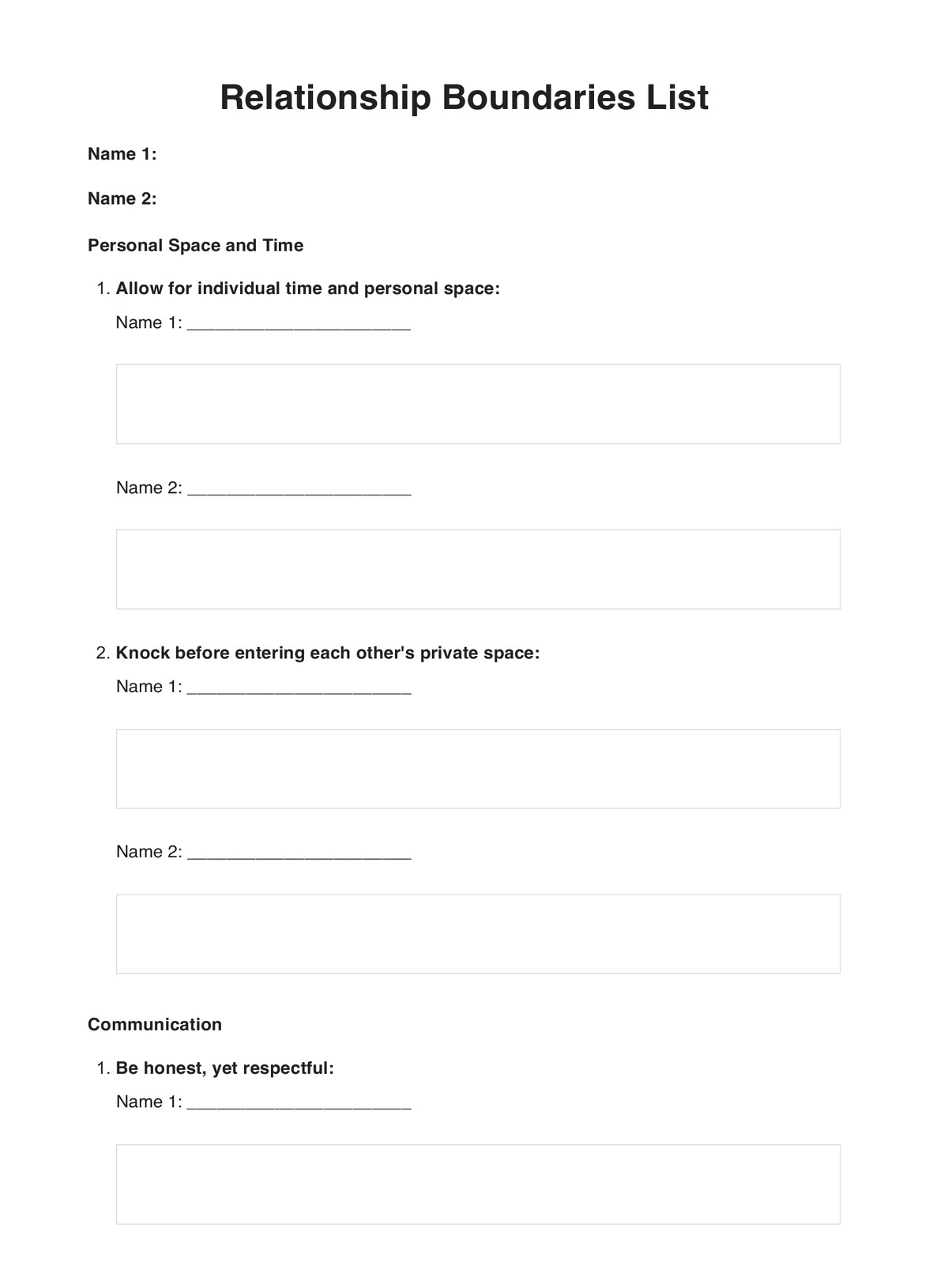
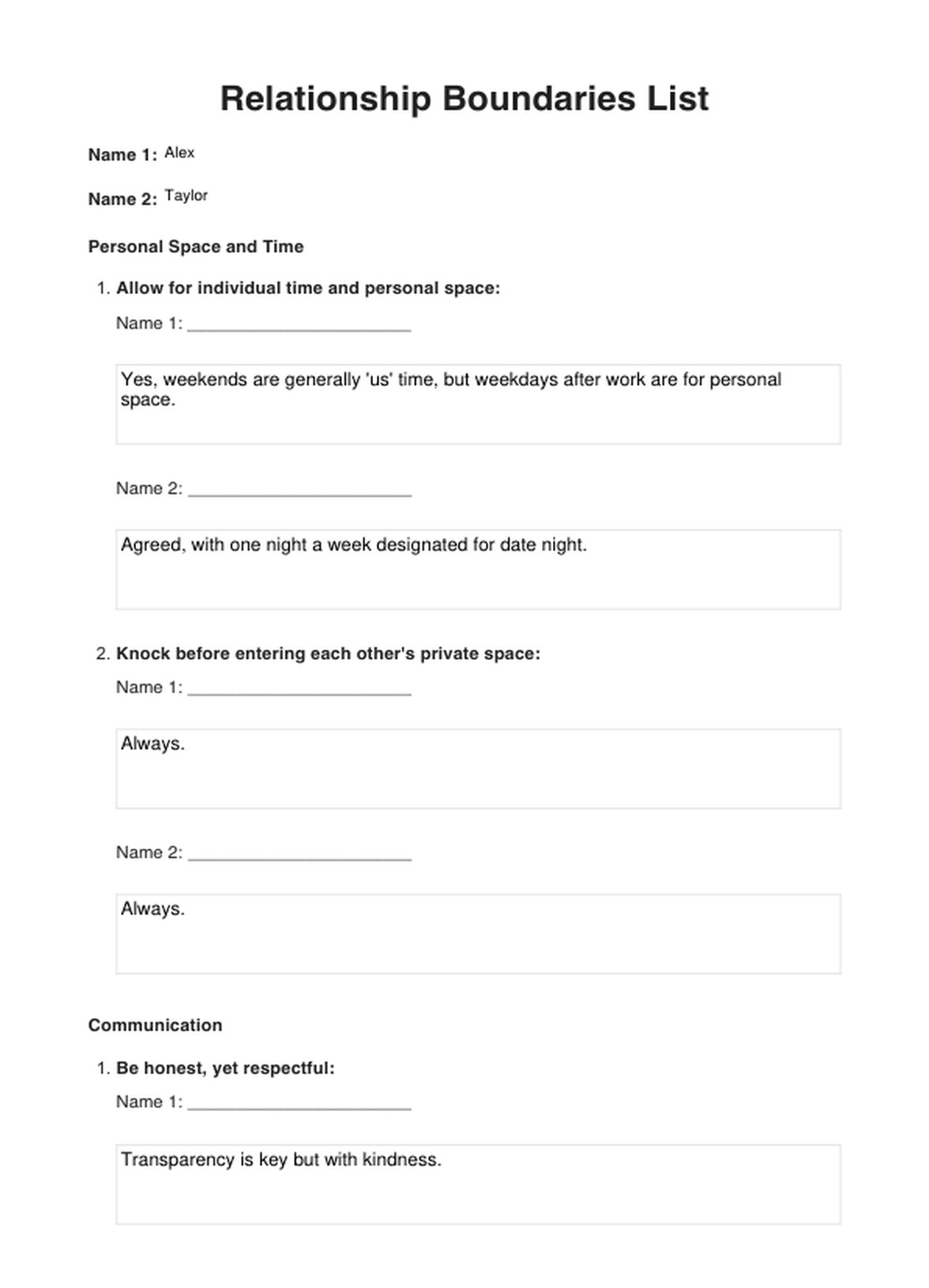













-template.jpg)


